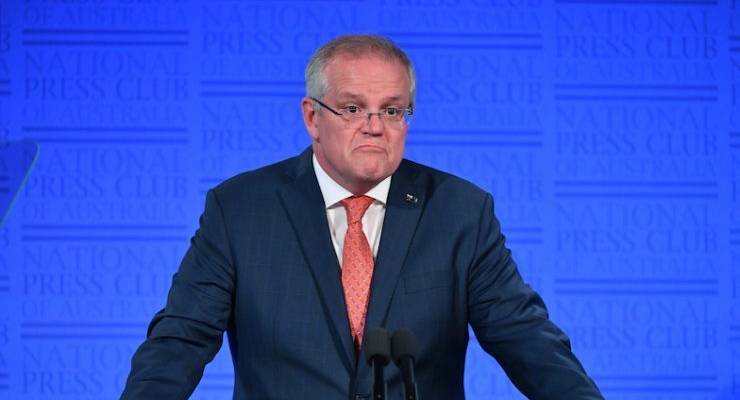
Journalists of a certain age tend to complain about the scourge of the 24-hour news cycle — a hamster wheel of practice which rewards outrage and opinion over “shoe-leather” news gathering and considered analysis.
But the news cycle is actually much longer. The rise of social media has produced something quite unexpected: the 96-hour news cycle. One version has arisen as the Covid-19 crisis has developed.
The government has consistently been ‘behind the curve’, introducing policies three or four days after they were clearly necessary. For those keeping count, four days is 96 hours.
The mainstream media (MSM in the jargon of social media) have had access to background briefings about the policy proposals currently under consideration, most of which are rendered irrelevant by events before they can be announced.
But the discussion of next steps is taking place elsewhere, notably on social media. The demand for a ban on the Grand Prix, for example, was trending on Twitter several days before it was imposed.
Similarly, as travellers from the US became the primary source of new infections here demands for the ban on Chinese visitors to be extended to the US, were widely circulated.
The government finally acted, several days later, with a requirement for self-isolation for all arrivals, and then, today with a ban on all non-residents.
Like everything else, the pandemic has changed the 96-hour news cycle. But it was around well before this. It goes like this:
On day one, an event occurs, but goes unreported by the mainstream media (MSM).
On day two, someone on Twitter notices and the story goes viral.
On day three, the issue is picked up by the “fringe MSM” that has grown up as the internet has reduced the costs of running a news outlet. (Crikey is the pre-eminent example here in Australia, but others include The New Daily, New Matilda and The Saturday Paper. The Guardian, news.com.au and SBS are also in this group as far as the political class is concerned.)
On day four, journalists in the core MSM (News Corp, Nine/Fairfax and ABC) decide that the issue really is “a story”, and run with it.
Don’t believe me? Try this.
The archetypal example was Scott Morrison’s Hawaiian holiday (timeline here).
On Monday December 16, Michael McCormack was appointed acting PM, with no public announcement. Presumably Morrison and his family had left the country the previous evening.
By mid-morning Greens MLC David Shoebridge had discovered the fact and reported it on Twitter, which rapidly erupted in speculation with the hashtag #WheresScotty. The Financial Review ran a brief story with no details of Morrison’s whereabouts.
On Tuesday December 17, Samantha Maiden from The New Daily picked up the story and reported a lawyerly denial from the PM’s office.
On Wednesday December 18, Katharine Murphy from The Guardian wrote a piece critical of Morrison, while dismissing his whereabouts as a matter of no concern. There followed a number of pieces in which the question of Morrison’s whereabouts was buried far below the lede.
By Thursday, however, four days after Morrison’s departure, his presence in Hawaii was confirmed and became the subject of front-page news.
For those keeping count, four days is 96 hours.
A more recent instance is Josh Frydenberg’s jibe about ashrams, directed against Jim Chalmers’ proposal for a wellbeing budget.
The opposition took it as a harmless joke and, to the extent that it was covered at all, the MSM saw it the same way.
But lots of people on Twitter picked up the point that Frydenberg seemed to think that mockery of Hindu religious practices was OK, even as the government prepared legislation to protect the sensitivities of Christians and Jews.
After being amplified by fringe outlets like Junkee, the issue made it to SBS.
A day or so later, it seeped into the MSM. The government extracted a “what, me worry?” statement from Liberal backbencher Dave Sharma, who has Indian heritage, and wheeled out an Astroturf Hindu organisation to push the same line. Again, the process took about 96 hours.
Of course, things don’t always work out this way.
In the course of the bushfire catastrophe, firefighter Paul Parker delivered a expletive-laden tirade against Scott Morrison, and was lionised on Twitter with the hashtag #IStandWithPaul.
Nine’s chief political correspondent Chris Uhlmann, who’d done an interview with Parker, unleashed a “gotcha” with the revelation that the Twitter hero was a One Nation supporter. He presumably imagined this would lead the Twitterati to drop Parker like a diseased limb.
Instead, the overwhelming reaction was along the lines “Oh well, it’s a free country and while we don’t agree with him on PHON, he’s still a brave firefighter and didn’t deserve sacking just because he swore about the PM”.
Undaunted, Uhlmann wrote up the story as if everything had gone to plan (indeed, his piece reads as if he had it already written and hit send the moment his tweet went up).
This produced even more mockery on Twitter, with Uhlmann himself becoming a trending topic. But no one in the MSM thought it worthwhile to point out that one of their most prominent colleagues had been caught out. So, the divide between MSM and digital media was dug a little deeper.
What can we learn from this?
The problem with both the 24-hour cycle and the 96-hour cycle is not about timing, but about gatekeeping.
Journalists and editors work on the basis of a “news story”, where they decide what is news and how, if at all, the story should be told.
Instant news (the 24-hour cycle) undermines this because there is no time to decide how the story should be told. The problem with the 96-hour cycle is the opposite.
Even if journalists decide something is “not news”, the public (or some proportion of the 4 million or so members of the public who have Twitter accounts) may decide differently.
At this point, the MSM can either run with the story (usually with a snarky reference to “social media”) or persist in the hope that it can be buried. Neither option is appealing.








This “story” must be fake news, because it doesn’t mention Google at all. (grin-emoji)
In one of the later articles about the imminent demise of AAP (sorry, I forget which – might even have been here on Crikey or ABC radio) I learned a key factoid about that aspect of the news media landscape. That is that most of the minor subscribers to AAP, such as commercial radio stations, had long since ditched their (expensive) subscription to the service and were instead sourcing their “news” directly from Google News’ front page. I hadn’t realized that, and it puts a different colour on Mr Murdoch’s continual ranting about Google stealing his content, IMO. That type of use doesn’t drive many end-user page impressions, I would think.
So that’s another gatekeeper of the question of “what is the news”, and that gatekeeper is a robot.